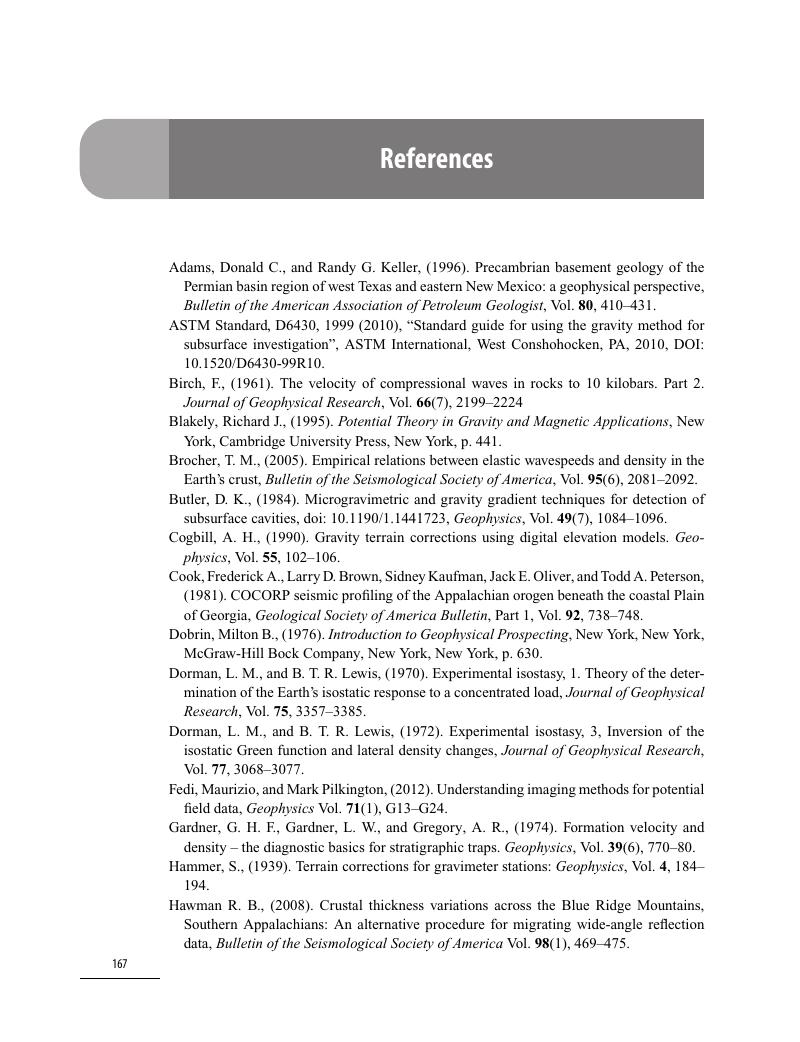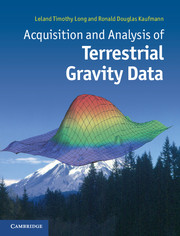Book contents
- Frontmatter
- Contents
- Preface
- 1 Gravitational attraction
- 2 Instruments and data reduction
- 3 Field acquisition of gravity data
- 4 Graphical representation of the anomalous field
- 5 Manipulation of the gravity field
- 6 Interpretation of density structure
- 7 The inversion of gravity data
- 8 Experimental isostasy
- A Appendix ACommon definitions and equations in potential theory
- B Appendix BGlossary of symbols
- References
- Index
- References
References
Published online by Cambridge University Press: 05 February 2013
- Frontmatter
- Contents
- Preface
- 1 Gravitational attraction
- 2 Instruments and data reduction
- 3 Field acquisition of gravity data
- 4 Graphical representation of the anomalous field
- 5 Manipulation of the gravity field
- 6 Interpretation of density structure
- 7 The inversion of gravity data
- 8 Experimental isostasy
- A Appendix ACommon definitions and equations in potential theory
- B Appendix BGlossary of symbols
- References
- Index
- References
Summary

- Type
- Chapter
- Information
- Acquisition and Analysis of Terrestrial Gravity Data , pp. 167 - 169Publisher: Cambridge University PressPrint publication year: 2013



